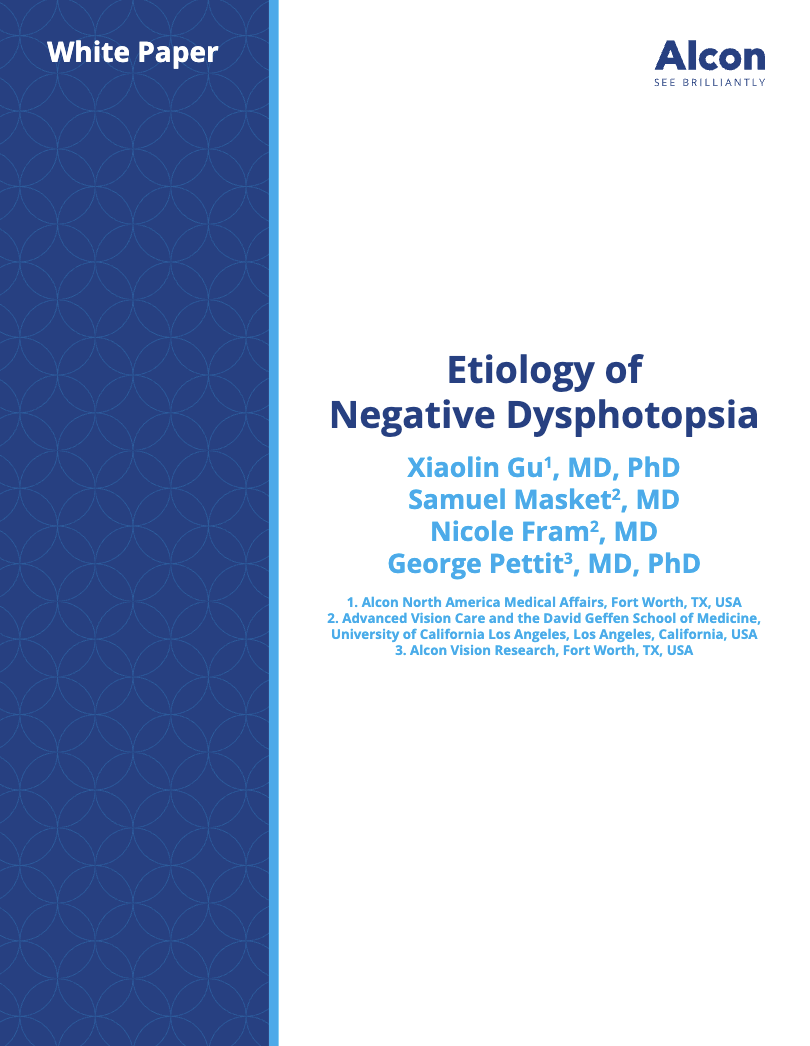

Cataract is the leading cause of visual impairment worldwide. Cataract surgery, the removal of clouded crystalline lens and subsequent implantation of an artificial intraocular lens (IOL), is the most commonly performed ocular surgical procedure. In 2015, approximately 3.6 million patients in the United States and more than 20 million worldwide underwent cataract surgery. With an increasing aging population, the number of patients undergoing this surgery is expected to increase each year.1 Modern cataract surgery is generally considered a safe and effective procedure due to the advancement of surgical equipment, intraocular lens design, and surgical technique. However, in a minority of cases, undesired visual phenomena may still occur following an uneventful cataract surgery. These phenomena may take different forms, such as glare, halo, starburst, dark shadows, etc., and have been collectively named as “dysphotopsia.” Most pseudophakic patients who notice these symptoms either tolerate them or neurologically adapt to them over time. However, visually significant dysphotopsiae persist in a small fraction of patients. Persistent dysphotopsiae are considered the leading cause of patient dissatisfaction and surgeon frustration after cataract surgery because of the complicated causes and management strategies.2 Therefore, it is important for both surgeons and industry to have a better understanding of the etiology, prevalence and clinical manifestations to provide better treatment options and methods to minimize their occurrence including new IOL designs, better patient selection methods and pre/post-operative counseling.

